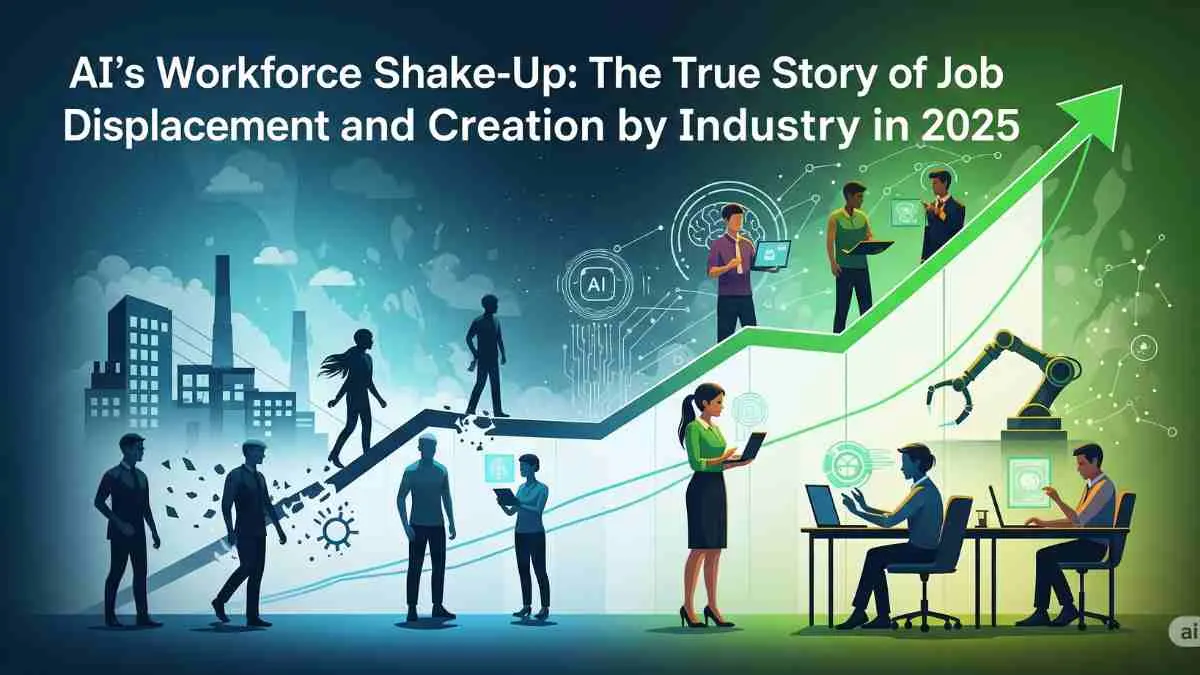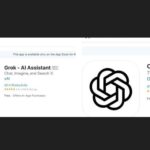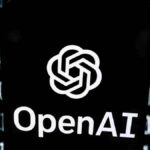In 2025, the impact of artificial intelligence (AI) on jobs is clearer than ever. Across industries, AI has become a powerful force of transformation. Some people fear losing their jobs, while others are stepping into newly created roles that didn’t exist just a few years ago. In this blog, we will explore the real numbers behind job losses and gains caused by AI in different industries. We’ll break it down with statistics, real-world examples, and insights that anyone can understand.
The Beginning of a Shift
In 2020, AI was a growing trend. Today, in 2025, it’s deeply embedded in our everyday work. From automated cashiers to AI-based legal research, machines are either working alongside humans or replacing them entirely.
This isn’t the first time technology has changed jobs. Think back to the Industrial Revolution. Machines replaced many manual labor roles but also created new kinds of work. The same thing is happening now with AI. But this time, the pace is faster, and the changes are more complex.
Some people are worried. That’s natural. But there’s also a positive side to this story. Many new jobs are being created, and some old roles are simply evolving rather than disappearing. Let’s take a deep dive into how AI is changing the job landscape—both positively and negatively—in different industries.
1. Manufacturing: The Hardest Hit
Displacement Stats:
According to the World Economic Forum, 40% of all factory-based roles are projected to be replaced or reshaped by AI in 2025.
Why It’s Happening:
AI-powered machines can now handle welding, assembling, quality checks, and packaging. These systems work 24/7, rarely make errors, and reduce operational costs.
Creation Stats:
The same report shows that new roles in AI maintenance, robotics engineering, and data analysis in manufacturing are growing by 18% annually. These jobs require different skills—skills that are often higher paying.
Real Story:
Rajesh, a line worker at an automobile plant in Pune, lost his job in 2024. But after six months of retraining, he was hired as a robotic supervisor. “The machine didn’t take my job. It gave me a new one,” he said. His company partnered with a local skill development center to offer free AI training.
Additional Insight:
Many companies are now investing in “human-AI collaboration” programs, where workers are trained to work alongside smart machines rather than be replaced by them. This reduces fear and boosts productivity.
2. Retail: From Salespeople to AI Bots
Displacement Stats:
McKinsey reports that around 22% of cashier and front-desk roles have already been replaced by automated systems in 2025.
Why It’s Happening:
Self-checkout kiosks, AI shopping assistants, chatbots, and virtual try-on tools have changed how we shop. Large retail chains now use AI to manage inventory, forecast demand, and personalize user experiences.
Creation Stats:
At the same time, demand for e-commerce analysts, UX designers, and AI behavior modelers has increased by 12% this year. These roles require digital literacy and creativity.
Real Story:
Emma, a former cashier in the U.S., saw her store shut down in 2023 due to automation. She used online courses to learn digital marketing. Today, she manages ad campaigns for an AI-driven retail platform. “I used to scan barcodes; now I scan customer insights.”
Industry Trend:
Retailers are combining AI with physical stores through concepts like “smart shelves” and cashier-less checkout, like Amazon Go. This is creating hybrid roles that need both customer service and tech skills.
3. Healthcare: Mixed Impact
Displacement Stats:
The Brookings Institution states that AI automation in healthcare has replaced around 9% of administrative jobs, such as billing, data entry, and scheduling.
Why It’s Happening:
AI is excellent at pattern recognition. It handles tasks like reading medical scans, predicting health risks, managing electronic health records, and automating appointments.
Creation Stats:
However, roles such as telemedicine coordinators, AI-assisted diagnostic professionals, and wearable tech analysts are on the rise. The sector is expected to see a 15% job increase in tech-supported care.
Real Story:
Rita, a hospital receptionist in Mumbai, was let go when her hospital adopted an AI scheduling system. After completing a three-month training course, she transitioned into a telemedicine support role. She now helps elderly patients navigate online consultations.
Bonus Insight:
AI in healthcare is not just about replacing humans. It’s about enhancing decision-making. Many doctors use AI tools to cross-check diagnoses, resulting in fewer errors and faster care.
4. Finance: Less Paper, More Algorithms
Displacement Stats:
According to PwC, up to 30% of tasks in finance, especially in auditing, bookkeeping, and risk assessment, are now performed by AI.
Why It’s Happening:
AI is better and faster at processing large volumes of financial data. It can identify fraudulent transactions, generate reports, predict market trends, and offer investment suggestions—all in seconds.
Creation Stats:
New roles like AI ethics consultants, fintech developers, and blockchain analysts have grown by 10%. Many of these jobs didn’t exist five years ago.
Real Story:
James, once a junior accountant in London, was laid off in 2023. He used his severance to take an AI ethics course. Today, he works at a bank helping design AI systems that are fair, transparent, and accountable.
Deep Dive:
The finance industry is also hiring cybersecurity analysts to protect AI systems from fraudsters. With increasing digital transactions, this is a fast-growing field.
5. Education: Teachers with AI Assistants
Displacement Stats:
UNESCO notes that 8% of teaching assistant roles have been affected by AI-based grading and tutoring tools.
Why It’s Happening:
AI tutors, automated grading systems, and virtual classrooms now assist in homework checking, student monitoring, and lesson delivery.
Creation Stats:
Instructional designers, ed-tech developers, and AI learning architects are in high demand, with a 17% rise in hiring globally.
Real Story:
Aman, a high school teacher in Delhi, felt threatened when his school introduced AI tools. But he soon embraced them. Now he uses AI to track student progress and create personalized lesson plans. “AI helps me teach smarter, not harder,” he says.
Education Shift:
Countries like Finland and South Korea are investing heavily in AI-powered classrooms. This is increasing the demand for teachers who are trained in both pedagogy and technology.
6. Transportation: Self-Driving Disruption
Displacement Stats:
The International Transport Forum projects 25% of long-haul trucking jobs may be lost by the end of 2025.
Why It’s Happening:
Self-driving trucks, automated traffic systems, and AI delivery drones are cutting operational costs and human error. Many logistic companies now prefer these AI systems for efficiency.
Creation Stats:
However, job roles in fleet monitoring, sensor maintenance, drone operations, and logistics optimization have risen by 20%.
Real Story:
Carlos, a trucker in Mexico, was replaced by an autonomous truck. Instead of retiring early, he learned how to operate drone deliveries. Today, he manages five delivery drones in his city.
Tech Integration:
Tesla, Waymo, and other companies are pushing the boundaries of driverless transport. This creates demand for remote operators, drone pilots, and AI logistics analysts.
7. Legal: Fast-Paced Document Review
Displacement Stats:
The ABA Journal notes a 12% reduction in paralegal and document review roles due to AI.
Why It’s Happening:
AI tools can scan hundreds of contracts, legal precedents, and case law in seconds. This is faster and cheaper than human review.
Creation Stats:
Legal technologists, digital forensics experts, and cybersecurity consultants are now essential. Their numbers have grown by 14%.
Real Story:
Anita, a legal intern in Bengaluru, used to do basic research. Now she works for a legal tech startup that designs AI tools for law firms.
Tech & Ethics:
The legal industry is also hiring professionals to ensure AI systems follow ethical and legal standards, especially when used in criminal justice.
What We Can Learn
- AI does not always mean job loss. It often means job transformation or job evolution.
- Skills matter more than ever. People who reskill or upskill are far more likely to find new roles.
- Industries must adapt fast. Companies that invest in AI training see smoother transitions and higher employee retention.
- Policymakers need to act. Governments should support lifelong learning and job transition programs.
The Global Impact: A Summary
| Industry | Job Loss % | Job Creation % |
|---|---|---|
| Manufacturing | 40% | 18% |
| Retail | 22% | 12% |
| Healthcare | 9% | 15% |
| Finance | 30% | 10% |
| Education | 8% | 17% |
| Transportation | 25% | 20% |
| Legal | 12% | 14% |
Final Thoughts
AI is not a villain or a hero. It’s a tool. In 2025, that tool is revolutionizing the workforce worldwide. While it takes away some jobs, it’s also creating new opportunities we never imagined.
Whether you’re a student, employee, or business owner, the key is to stay ready. Learn, adapt, and embrace change. The most successful people in 2025 are not the ones with the most knowledge, but the ones who are willing to keep learning.
In the end, the future of work isn’t just about artificial intelligence. It’s about human intelligence, adaptability, and our courage to grow with the times.
Frequently Asked Questions (FAQ)
1. What jobs are most at risk due to AI in 2025?
Jobs that involve repetitive, predictable tasks are most at risk. This includes roles like factory line workers, cashiers, data entry clerks, and paralegals. These jobs can be easily automated using AI tools.
2. Which industries are seeing the highest job losses due to AI?
According to industry data, manufacturing (40%), finance (30%), and transportation (25%) are among the industries with the highest displacement rates due to AI.
3. Are new jobs being created because of AI?
Yes. While AI displaces some jobs, it also creates new ones. Roles in AI system maintenance, data science, cybersecurity, legal tech, and telemedicine are seeing significant growth in 2025.
4. What skills should I learn to stay relevant in the AI era?
Focus on digital literacy, AI tool usage, data analysis, cybersecurity, problem-solving, and creativity. Soft skills like communication and adaptability are also becoming increasingly valuable.
5. Is AI going to take over all jobs eventually?
No. AI is a tool designed to assist humans, not replace them entirely. While some tasks will be automated, many roles require human judgment, empathy, and creativity—skills AI cannot replicate.
6. How can businesses prepare for AI-driven job changes?
Companies should invest in employee training, adopt AI responsibly, and plan job transitions. Businesses that support upskilling and reskilling will handle the AI shift more smoothly.
7. What government actions are needed to support workers affected by AI?
Governments need to provide accessible education, subsidize skill training programs, ensure ethical AI regulations, and support job transition programs to minimize displacement shocks.
8. Will education systems change to prepare future workers for AI?
Yes. Schools and universities are already updating curriculums to include coding, AI literacy, and digital tools. Countries that focus on future-ready education are better prepared for the AI economy.
9. Are AI-related jobs secure in the long run?
Jobs in AI development, maintenance, and ethics are expected to grow for the next decade. As AI adoption increases, professionals in these areas will be in high demand.
10. How can I transition into an AI-resilient career?
Start by identifying your strengths. Then take online courses in tech or AI-related subjects. Look for apprenticeships or internships in growing sectors. Be willing to adapt and stay updated with trends.
Still have questions about AI and the future of work? Drop them in the comments or reach out via our contact page.











